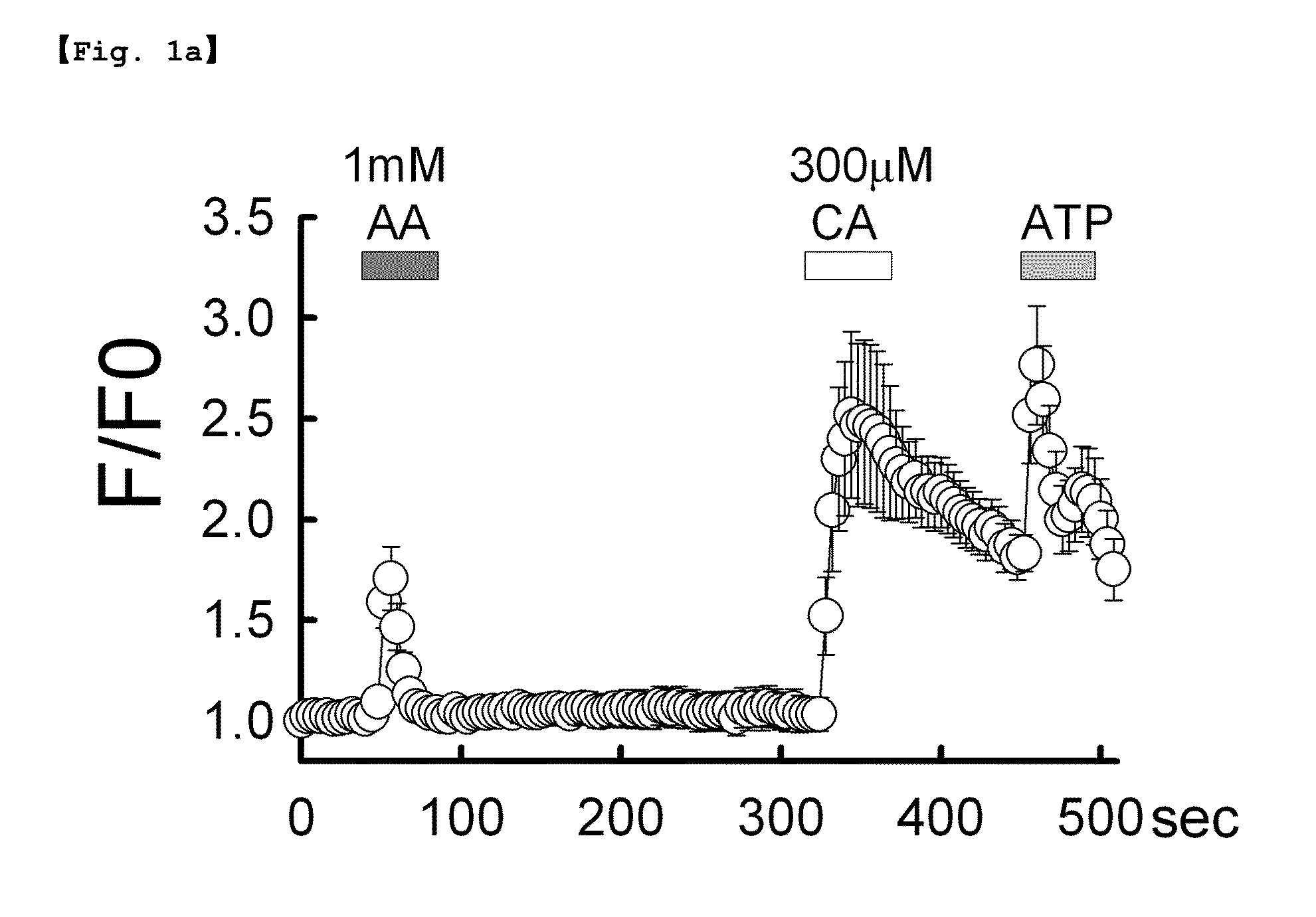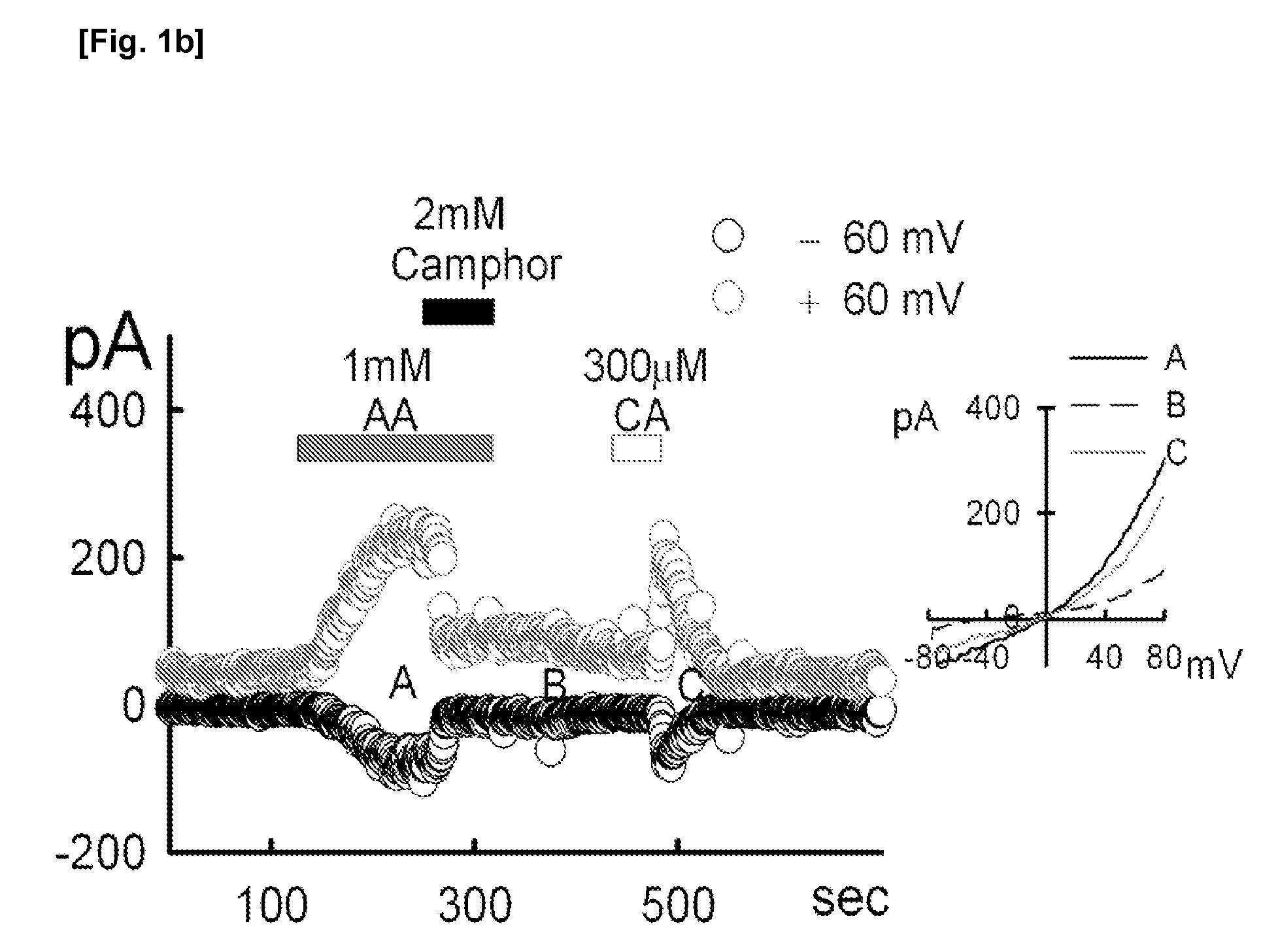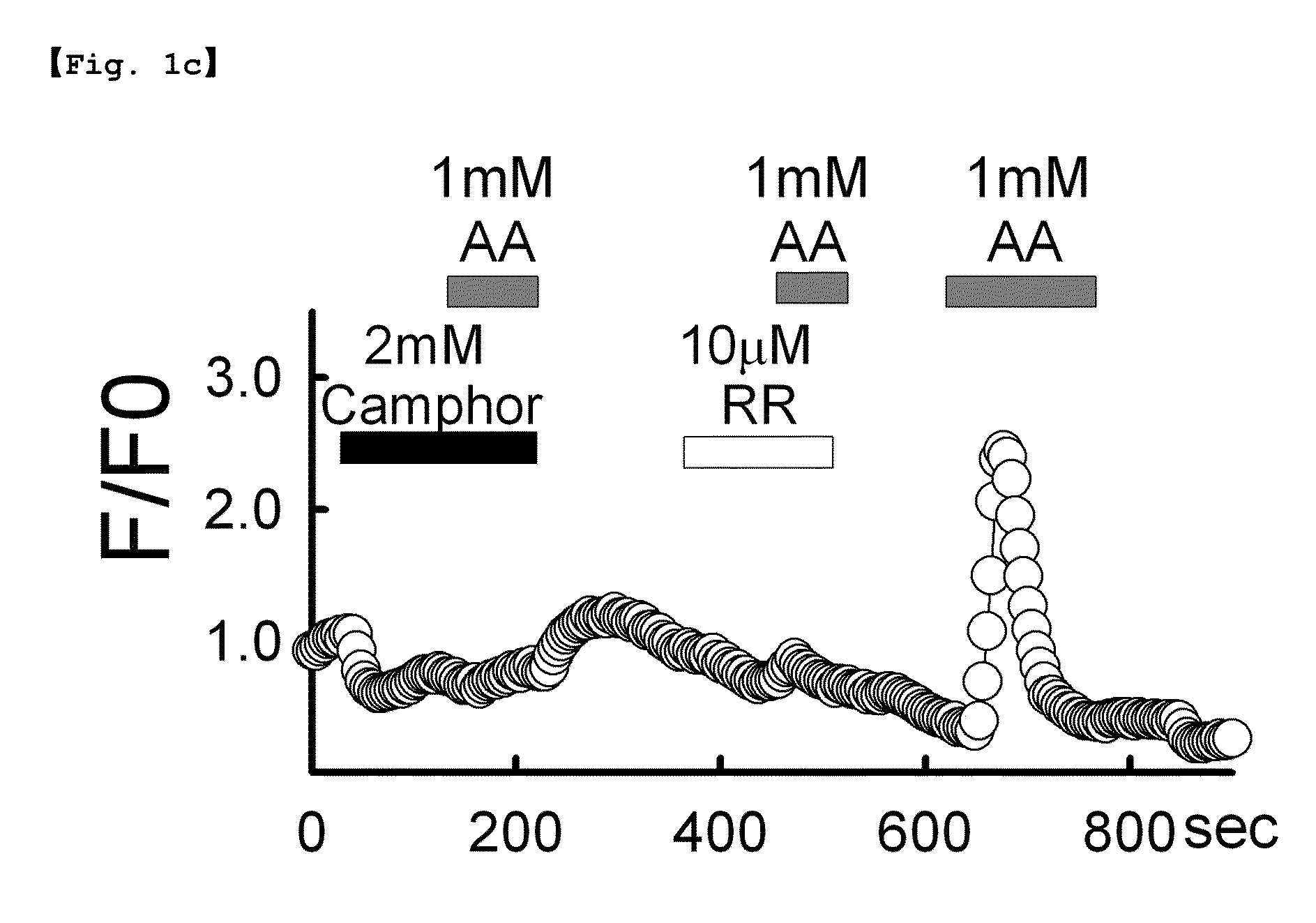Method for activation of transient receptor potential cation channel, subfamily A, member 1 using acetaldehyde
a transient receptor and potential cation channel technology, applied in the field of activation of trpa1 (transient receptor potential cation channel, subfamily a, member 1) using acetaldehyde, can solve the problem of hangover pain caused by heavy ethanol intake or drinking, and achieve the effect of facilitating the isolation of sensory neurons
- Summary
- Abstract
- Description
- Claims
- Application Information
AI Technical Summary
Benefits of technology
Problems solved by technology
Method used
Image
Examples
example 1
Construction of Cell Lines Transfected with TRPV
[0142]HEK293T cell line (ATCC CRL-11268) was transiently transfected with plasmid DNA containing polynucleotide encoding hTRPA1 (SEQ. ID. NO: 1), rTRPV2 (SEQ. ID. NO: 2), rTRPV1 (SEQ. ID. NO: 3), mTRPV4 (SEQ. ID. NO: 4), mTRPA1 (SEQ. ID. NO: 5), hTRPV3 (SEQ. ID. NO: 6) or mTRPM8 (SEQ. ID. NO: 7).
[0143]Particularly, the HEK293T cell line was transiently transfected with individual TRP channel plasmid (pcDNA3.1 containing polynucleotide encoding hTRPA1, rTRPV2, rTRPV1 or mTRPV4; pcDNA5 / FRT containing polynucleotide encoding mTRPA1, hTRPV3 or mTRPM8) 3 μg per 35-mm dish and 600 ng / well of pcDNA3 (Invitrogen Corp., USA; containing green fluorescent protein (GFP) cDNA) using Fugene6 (Roche Diagnostics, USA) according to manufacturer's instruction. The transformed cells were cultured in DMEM / F12 containing 10% FBS and 1% penicillin / streptomycin in a CO2 incubator for 24 hours. The cells were replated onto poly-L-lysine-coated glass coverslip...
example 2
Preparation of Trigeminal Neurons
[0144]Trigeminal ganglia were dissected out of decapitated adult ICR mice in cold PBS and treated with 1.5 mg / Ml of collagenase / dispase (Roche Diagnostics, USA) at 37□ for 45 min, and then treated with 0.25% trypsin (Invitrogen, USA) for 15 min. The trigeminal neurons prepared thereby were then plated onto poly-L-lysine-coated coverslips in DMEM / F12 containing 10% FBS, 1% penicillin / streptomycin and 5 ng / Ml of 2.5S NGF (Invitrogen, USA), nerve growth factor (Invitrogen), followed by culture in a CO2 incubator for 48-72 hours.
example 3
[0145]All the test results were analyzed by using the two-tailed Student's t-test and shown as means ±SEM. ***p<0.001, **P<0.01 and *P<0.05.
PUM
| Property | Measurement | Unit |
|---|---|---|
| pH | aaaaa | aaaaa |
| time- | aaaaa | aaaaa |
| pH | aaaaa | aaaaa |
Abstract
Description
Claims
Application Information
 Login to View More
Login to View More - R&D
- Intellectual Property
- Life Sciences
- Materials
- Tech Scout
- Unparalleled Data Quality
- Higher Quality Content
- 60% Fewer Hallucinations
Browse by: Latest US Patents, China's latest patents, Technical Efficacy Thesaurus, Application Domain, Technology Topic, Popular Technical Reports.
© 2025 PatSnap. All rights reserved.Legal|Privacy policy|Modern Slavery Act Transparency Statement|Sitemap|About US| Contact US: help@patsnap.com



